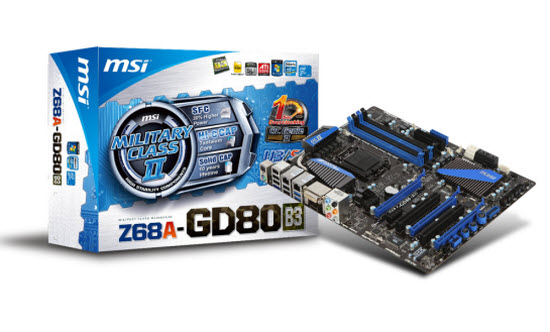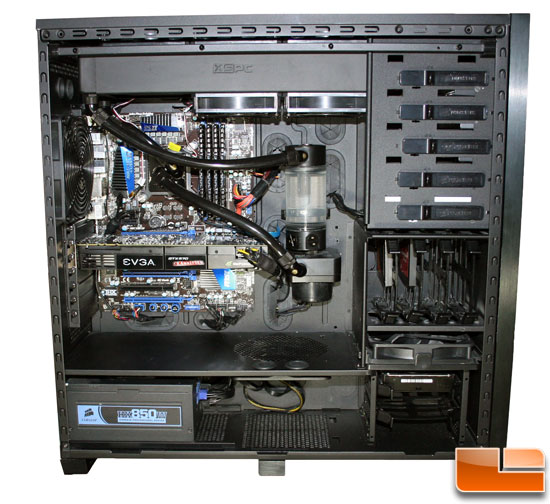Upgrading From Intel P55 w/ Lynnfield to Intel Z68 w/ Sandy Bridge
By
So was it worth it?
The big question is was it worth it to move from the last generation Intel Core i7-870 processor and NVIDIA GeForce GTX 470 video card to the current generation Intel Core i7-2600K CPU and NVIDIA GeForce GTX 570 GPU. We found the answer as in most things is, it depends. If you are doing a lot of media encoding and heavy Photoshop work then it would definitely be worth the upgrade. We saw great improvements and we were not even using Quick Sync or CUDA which could have really dropped the hammer on the numbers. For gaming we would say that an entire system upgrade was OK but not a great improvement. We would suggest just upgrading the video card and hold on for another year to see what is around the next corner unless your system is missing features such as USB 3.0 and SATA III 6Gbps.

Moving from a P55 to a Z68 architecture was all about taking advantage of what Sandy Bridge brought to the table and in the areas that Intel highlighted it came through. We saw great improvement in video performance and other encoding tasks all with lower power consumption. While the PCI-E Gen 3 is still a bit dubious it is nice to know it is there if we find we can take advantage of it in the future. The integrated graphics are nice but if your going to pay for a motherboard in the price range of the Z68A-GD80 you are probably going to run a dedicated GPU leaving only possibly Quick Sync as a value.
One of the largest improvements we noticed is also one of the more expensive and that is the transition to a decent SATA III SSD drive. The boot times are amazing and everything is very snappy on our new system. Basically doubling the read speed over our mechanical WD Black drive means very little down time waiting on anything. We cannot wait for the day that Terabyte SSD’s are abundant at a price point near where traditional HDD are today. The other transfer improvement of USB 3.0 is also a significant over USB 2.0. As more and more devices come out supporting this new standard it is well worth the upgrade if you do not have it today. Moving from 480 Mb/s to 5Gb/s is a massive jump in speed. IF you are running an old motherboard that doesn’t have SATA III and USB 3.0 then you should highly consider upgrading. The good news is even if you have the older Lynnfield chip you can find motherboards with both of these technologies that support that CPU. But given the price of and i7-2600k or i5-2500k why wouldn’t you upgrade the CPU at the same time.
For gamers the average 15% improvement we saw across our test games were mostly due to the GPU upgrade and unless you are rocking a really old system we would hold off on the whole system upgrade. It could have simply been the games we chose to play, but in all honesty I can say I simply could not really tell a difference from a GTX 470 and GTX 570. Sure the frame rates are better on the GTX 570 and it wins on all the benchmarks, but it didn’t feel liked it played any better or enabled me to turn on any more eye candy than I had with the old card. Now it is tough to find a GTX 470 these days if you have one and wanted to do SLI so that alone could motivate you to upgrade, just don’t expect a big WOW when you do.
The headliner of the match was the MSI Z68A-GD80 motherboard retailing for $219.99 shipped. We liked most of the robust features of this motherboard and the layout really made installation a breeze. Four fan headers in addition to the CPU meant we could run a full water cooling set up with out extra molex converters and fan controllers. While we are dubious of the current value of PCIe v3.0 it is nice to know that this board gives you some future proofing. If there is an area to improve on it would be the UEFI BIOS. It can be temperamental at times and little difficult to navigate. It is too bad that they still seem haunted by the UEFI BIOS ghosts preventing you from getting all the sweetness out of an otherwise solid board. Good news is it appears they have a good BIOS in the beta they built for us and it should fix this issue soon when it is released to the public. Just remember as long as you are not trying to go extreme on the overclock and push above 5.0GHz on this board, even with the buggy BIOS, is still a decent motherboard.
Was it worth it?
In the end for what we use our system for the answer is YES. We improved our application performance which allowed us to invest more time into fun video rendering openings such as the one we just used for the Blizzcon 2011 footage. Our system is very snappy due to the SATA III SSD and our backups are lighting fast over USB 3.0. Our games run a little faster and those few extra FPS just might allow us to get that headshot off before you spot us. Finally hitting 1.8 GHz overclock shows that this new system has plenty of headroom. Doing all this and consuming less power is a big benefit these days with utility prices continuing to climb.

Legit Bottom Line: If you do a blend of gaming, video, and photo editing the 15% – 25% performance gains are worth the price. If you are purely a gamer then just upgrade your video card and wait to see what the next generation brings to the fight.

Comments are closed.